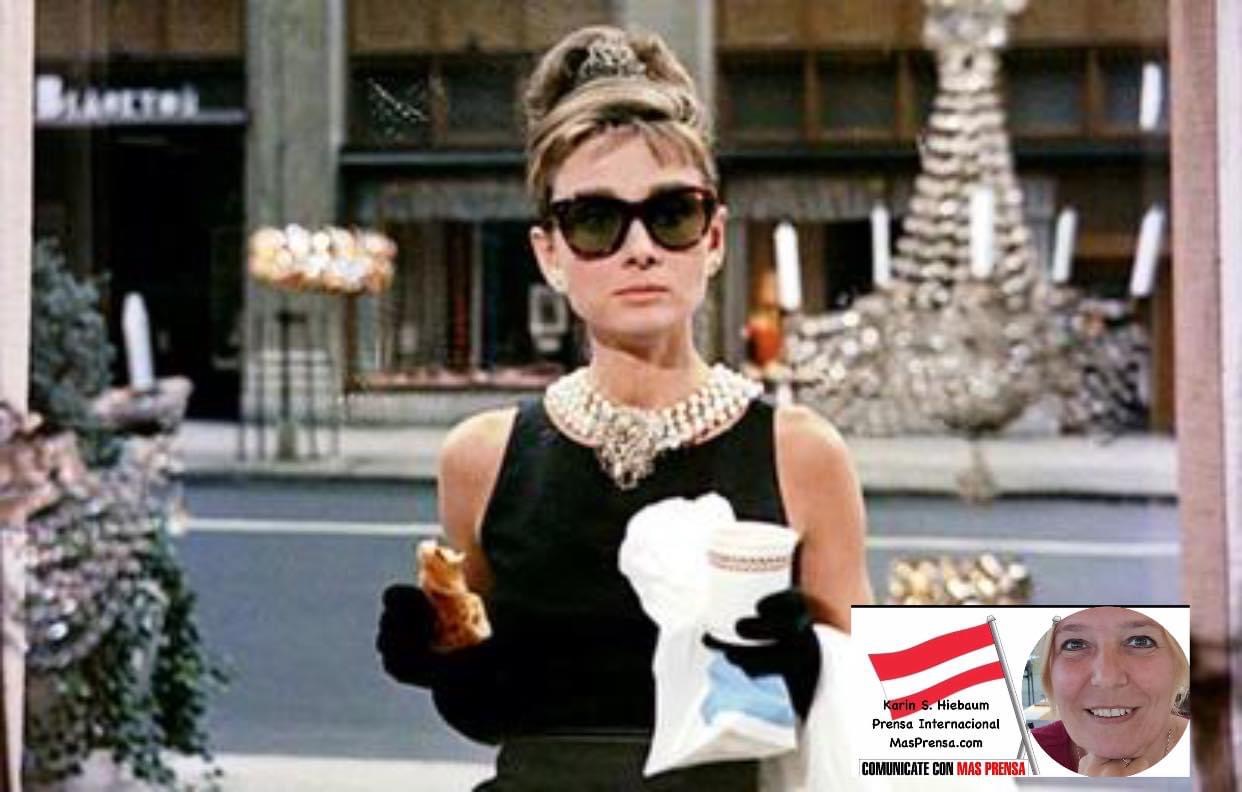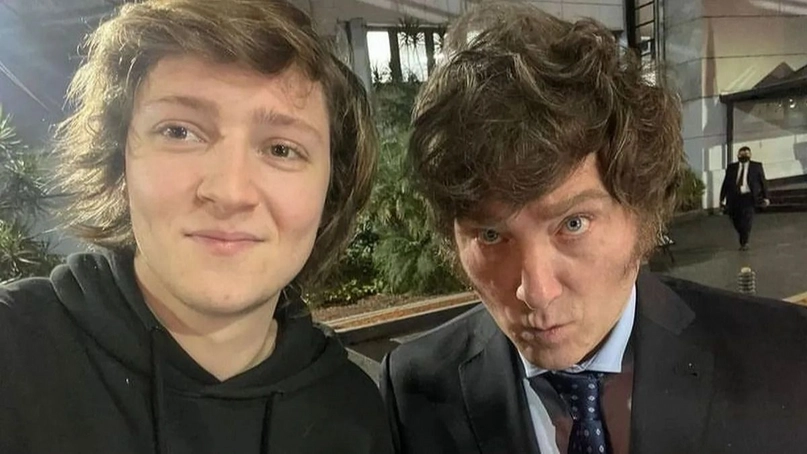
She debuted in the cinema in the early 50s and, soon after, it was already essential. Eternal thanks to her performances in films such as «Holidays in Rome» or «Breakfast with diamonds», she was also a collaborator of the Dutch resistance against the Nazis. 30 years after his physical disappearance, we check the current intensity of Audrey Hepburn’s legacy.
The shots and bombs shook the foundations of each house in Arnhem, a quiet Dutch town, located in the east of the country, on the banks of the Rhine. A space that until recently had been idyllic and serene had become a hell after the Nazi invasion, in May 1940. After the separation of her parents, the young Audrey Kathleen Van Heemstra Hepburn-Ruston, born in Brussels in 1929, had arrived there with her mother, the impoverished Dutch Baroness Ella Van Heemstra, and her two brothers. They all witnessed the Battle of the Netherlands that left several locations in the country in rubble. Soon, one of the boys was forcibly taken to work with the Nazis, while the other had to hide. Audrey and her mother barely survived the so-called «Famine winter», without electricity or water, eating tulip bulbs and cooked grass. In those days he suffered anemia and various respiratory problems that left him with an everlasting thinness that he would stylize thanks to his ballet classes. Her great dream was to be a professional dancer. Less than 100 kilometers from there, in an attic in Amsterdam, Anna Frank, a girl of the same age, who dreamed of being a writer, hid with her family suffering similar hardships, but with a fatal fate.

Adolf Hitler’s delirious ideas had set Audrey’s father, with whom he would cut practically all bond after the separation. That same mortal ideology seemed to follow her from a young age. Horrified, she would see the Nazis brutally treat the Jews and carry out savage street executions. She also saw how they were taken in wagons to concentration camps from which they would never return. Even his uncle Otto, his mother’s brother-in-law, prosecutor and opponent of the Nazis, was shot along with her cousin Alexander, Baron Schimmelpenninck van der Oye, in 1942. Robert Matzen tells everything in his book «The Dutch Girl: Audrey Hepburn and World War II.» The trauma from what was observed would be one of the main reasons why, in 1959, he did not accept to play Anna Frank in the cinema.
Soon, She took advantage of his youth to serve as a mail among the members of the Resistance without raising suspicion. She also secretly distributed a rebel newspaper. «I didn’t know when the war was going to last, so I went to a Ballet school and learned to dance. By 1944, a year before the end of the conflict, he was already able to make performances. It was a way to contribute to the cause and I did actions to collect funds for the Resistance, which always needed money,» he tells an interlocutor in one of his first castings. «And what about the Germans? What did they do about it?» they ask her. «They didn’t know it,» she replies, with a shy preview of what her mischievous smile would be for the history of cinema. Those activities, clandestine, were also carried out in silence. «The best audiences I’ve ever had, they didn’t make a single sound at the end of my performance,» Hepburn said years later.

However, on September 17, 1944, Operation Market Garden arrived, a military attack by the allies that resulted in intense bombing and fierce fighting for 8 days. In that period, under the fear of being shot, they helped and hid in their basement a British paratrooper who managed to flee thanks to the Resistance. Audrey and her family would still have to wait to have peace, because the Allied attempt failed, the Nazis achieved their last great victory in the War and would remain in the Netherlands until, between May 7 and 8, 1945, the Canadian troops liberated Amsterdam, Rotterdam and The Hague. Only then could he leave that devastated country to look for new horizons. In London she began to stand out as a dancer, she made a name for herself thanks to her talent, beauty and overwhelming personality and would soon leave for the United States, where different circumstances – which she always called simply «luck» – led her to star in the musical «Gigi» on Broadway. Not long after he would make his first great film: «Holidays in Rome» (William Wyler, 1953) and he would not stop until he became the star he is until today.
Story of an actress
Gregory Peck, one of Hollywood’s most beloved personalities, showed him during that filming why he was. He made sure that Audrey headed the cast, helped her flow better in many scenes, forgot her inexperience and grew among them a platonic love that became a lifelong friendship. Later, in «Sabrina» (Billy Wilder, 1954), the story of the simple daughter of a driver turned into a European lady, Audrey would start another friendship that would be key, with Hubert D´Givenchy, the fashion designer who would be in charge of a wardrobe that would become influential after being put in it. As if she were the best performer for a song, Audrey’s beauty exalted that of her dresses. Then, other illustrious female talents would follow in his footsteps with Givenchy: Maria Callas, Marlene Dietrich, Ingrid Bergman, Lauren Bacall, Grace Kelly, Elizabeth Taylor or Sophia Loren.
«Tomorrow Miss Hepburn will come to see you to make the costumes for her next movie,» they told the French couturier one afternoon in 1953. Since Audrey was not yet so universally known, he thought he would receive Katharine Hepburn, the respected star of golden Hollywood. When he opened the door, he found the charm of the young actress who would reign for the next decade. She did know her work and thought he was «the most innovative, youthful and exciting designer» of that time. «I expected to see Katharine Hepburn and I found a tall and thin girl, with eyes like a lion,» Givenchy confessed in an interview.
The friendship arose immediately and the collaboration between the two lasted for the rest of their lives. Not only in films such as «A Face with an Angel» (1957), «Breakfast with Diamonds» (1961) – where he would play Capote’s immortal muse, Holly Golightly – or «Charada» (1963), but in fashion publishers, fashion shows, cocktails or even casual outings. The perfume L’Interdit also emerged from their friendship. After dedicating the fragrance to him, Givenchy announced that he would market it, to which Audrey, jokingly, said: «Mais je te l´interdit!» (I forbid you!). Audrey, of course, accepted and was the image of the advertising campaign.
She called him «my best friend» and he called «my sister.» In fact, in March 1954, when he attended the Oscar Ceremony in which he would get the only statuette of his career – which also deserved 4 other nominations and a posthumous Jean Hersholt award for his humanitarian work – he did so with a floral white Givenchy dress that is still an inesligable part of his image. Before she died, Audrey appointed the couturier executor of her will.
The habit of succeeding
Although he made four more films until his death, the last of Audrey Hepburn’s great roles was «Robin and Marian» (1976). Next to Sean Connery, they play some autumnal Robin Hood and Lady Marian. Despite the fact that he had not acted for almost 10 years – since he played blind in the thriller «Sola in the Dark» (1967) – his sons Sean Hepburn Ferrer and Luca Dotti insisted that he accept the role to act alongside «James Bond». Audrey accepted not only because of the possibility of working with the Scottish actor, but because the cast also included talents such as Richard Harris, Denholm Elliot, Nicol Williamson or Robert Shaw. In the story, Robin returns from the crusades to make one last attempt for the love of Marian, who has become a nun.
Audrey already had experience with the habit, since she had starred in «Story of a nun», one of her most successful dramatic works, in 1959. That film had 8 Oscar nominations – including one for her – and gave her the opportunity to take biographical elements to apply them to her performance. In the film she played a young woman who, called by her vocation, leaves her wealthy family in Belgium to enter the religious service during World War II. Audrey was, of course, of Belgian origin, and her mother had a noble title and wealthy origin, but during the war they experienced difficult times, such as those that occurred in Arnhem. Although the original choice was Ingrid Bergman, it was the Swedish actress herself who recommended Audrey. During the filming, Audrey was able to meet the real Marie-Louise Habets, inspiration for her character. They made a great friendship and it was Habets who took care of her during her recovery from the riding accident she suffered in the almost fatal filming of «Los que no perdonan» (John Huston, 1960), a western she made with Burt Lancaster. The actress spent six weeks in the hospital recovering from her spinal injuries and had an abortion as a result of that fall. However, he had no resentment with Huston. During his marriage to fellow actor Mel Ferrer – with whom he would appear in «War and Peace» (1956) – unfortunately, he would suffer other losses that would significantly affect his marriage.
It was during this time that his smoking increased, coming to smoke three packs a day. For many, it would be this vice that would lead her to the cancer that would end her life on January 20, 1993, exactly 30 years ago. Just on the day of Bill Clinton’s first swearing in as president of the United States.
Angel of the screen
At that time, despite having participated in a handful of films after «Robert and Marian», she was almost retired from the cinema, dedicated to her work as UNICEF Goodwill Ambassador, a position in which she was appointed in 1988. Thanks to his nobility and charisma, he did productive humanitarian work in countries with serious problems of poverty, hunger and inequality, victims in addition to serious internal conflicts, such as Vietnam, Guatemala, El Salvador, Honduras, Sudan or Somalia, in which he was one of his most remembered trips. His presence in all these places served to attract the attention of the whole world and get help to prevent more children and vulnerable people from continuing to die every day. Given her fame, it was undeniable that she also had ambassadors, heads of state, billionaire businessmen and other powerful people who could join efforts.
In 1989, with his health already cracked, he recorded «Always», only to have the opportunity to work with the director, Steven Spielberg. It charges a million dollars for its performance and donates everything to UNICEF. Interestingly, his character would originally be a man and was going to be played by his friend Sean Connery. She was, however, the final choice. Her character was an angel, that heavenly and ethereal character that she herself was about to become for many. «Now I just have to learn to act,» he could have said after this, just as he did when he started in cinema with a talent that seemed to come from another world. After all, although with different nuances, Audrey Hepburn was always a little bit her in all her characters. And it is, more than any other actress, in the cultural imaginary of several generations that fall, one by one, subjugated by its playful beauty, its sweet coquetry, its natural charm, its charm without effort and, above all, its simplicity to look and smile eternally. A little for all that will be that her friend Elizabeth Taylor said about her, after her departure: «God will be happy to have an angel like her along with him.»
In the middle of the time of influencers and Instagram there are fashion icons, which without the need for social networks, will always be remembered for their class and style. One of them is Audrey Hepburn. The Belgian actress fell in love in films such as Vacation in Rome, My Fair Lady, Sabrina or Breakfast with Diamonds.
Who doesn’t remember that image on Fifth Avenue, in front of Tiffany´s’ window. Hepburn wore a black Givenchy dress, black gloves, a pearl necklace and a beautiful bow with her characteristic mid-front bangs. Because yes, she knew how to wear a great hairstyle even with freshly washed hair… This is demonstrated in another of the scenes of Breakfast with Diamonds, where she appears with a towel rolled over her head and singing «Moonriver».
The French designer Hubert de Givanchy did not leave Hepburn alone on his journey through the big screen. They had a great friendship and she let herself be seen in his clothes in other movies like Sabrina. The couturier put on the clothes, but Audrey put on the hanger, and her class made everything easier. And he knew how to mark an era, along with other celebrities, he made midi-cut pants fashionable back in the 60s, making them together with the miniskirt one of the symbols of that decade.
Solidarity until her last days, she was appointed UNICEF ambassador, and after leaving us they created the Audrey Hepburn Children´s Fund. Because thanks to this, added to his simplicity, his class and his sense of humor, something that his closest ones always emphasized, Hepburn managed to become a fashion icon that can never be forgotten.





